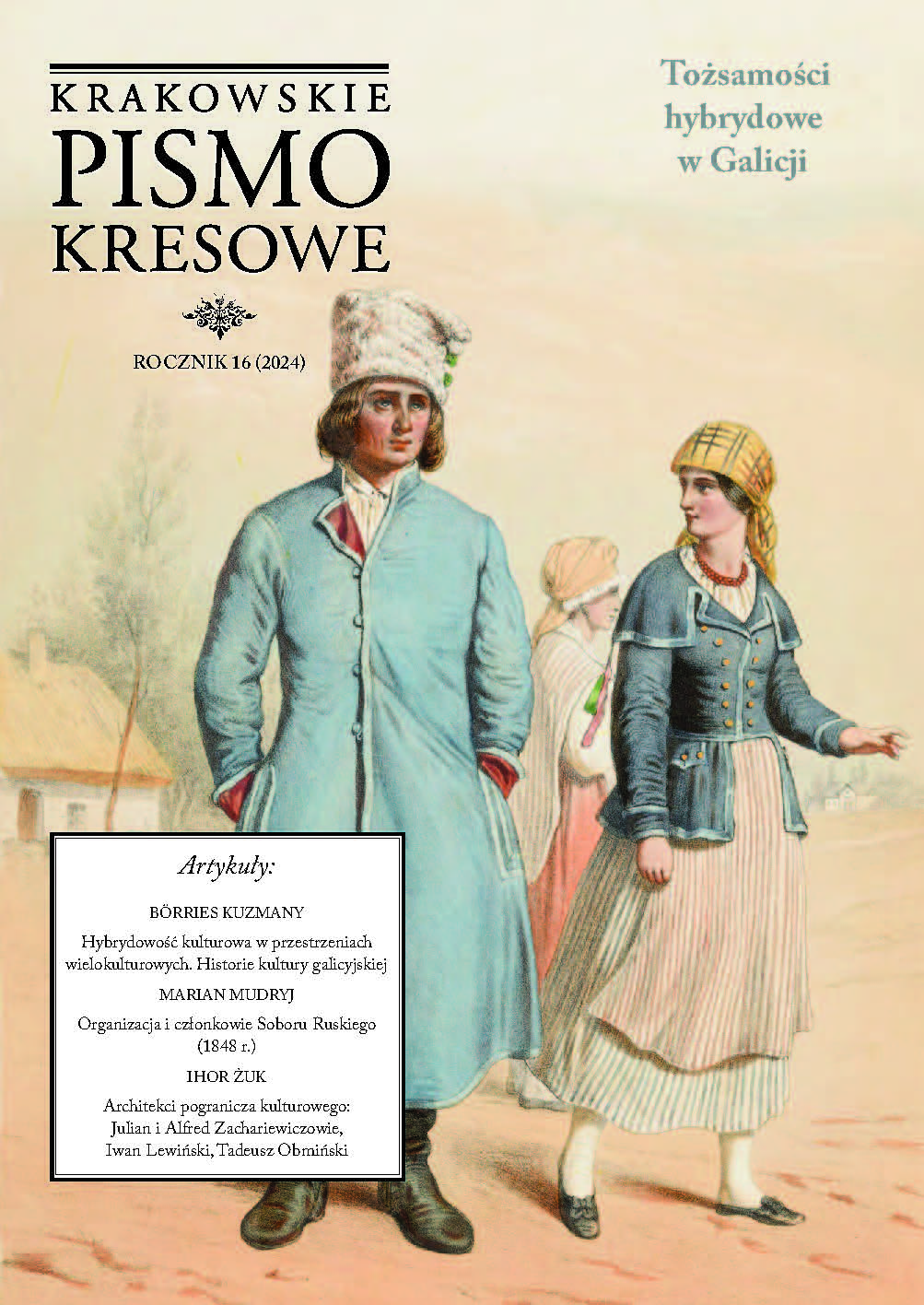Organizacja i członkowie Soboru Ruskiego (1848 r.)
Organization and members of the Ruthenian Sobor (1848)
Author(s): Marian MudryjSubject(s): History, 19th Century
Published by: KSIĘGARNIA AKADEMICKA Sp. z o.o.
Keywords: Ruthenian Sobor; “Ruthenians of the Polish nation” (gente Rutheni; natione Poloni); Ukrainian-Polish relations; Galicia; “Spring of Nations” (1848)
Summary/Abstract: Active participants in the revolutionary events of 1848 in Galicia were individuals who in various ways combined two identities – Ruthenian (Ukrainian) and Polish. This environment entered historiography as the “Ruthenians of the Polish nation” (gente Rutheni, natione Poloni). The only case in Galicia when the split national consciousness of gente – natione manifested itself in the form of a group rather than an individual reaction to political and social changes was the Ruthenian Sobor. This national political association, which existed from May to October 1848, tried to find a position between the Polish Central People’s Council and the Supreme Ruthenian Council (Holovna Ruska Rada). The article highlights the organizational structure and characterizes the personal composition of the Ruthenian Sobor. It is claimed that the Ruthenian Sobor had not become a fullfledged national-political organization – with a developed structure, governing bodies, and fixed membership – in terms of its organisation. It temporarily united several different circles, whose representatives declared their involvement in “Ruthenianness”. However, by the autumn of 1848, the number of members of the Ruthenian Sobor not only did not exceed the first 64 people, but had also decreased significantly. Therefore, the Ruthenian Sobor did not develop extensive independent activity. Among the members of the Ruthenian Sobor, two groups can be distinguished – those who emphasized the Polish identity, and those who considered the main value of the Ruthenian foundation and saw prospects for its development in the common Polish-Ruthenian political tradition. Representatives of the “Polish” segment – landowners, officials, writers – prevailed quantitatively. The “Ruthenianess” (although not always real) that they “remembered” was in fact an intuitive effort, in the conditions of revolutionary uncertainty, to achieve relative stability of Galician society. In general, the “Ruthenians” were a small group in the Ruthenian Sobor. They broke with the Supreme Ruthenian Council, which they considered too pro-Austrian and undemocratic, and sought to develop a Ruthenian-Ukrainian national consciousness based on Polish organizational and ideological models. However, the Ruthenian Sobor failed to consolidate the mixture of pro-Polish sentiments among the Galician Ruthenians. Many of them, primarily Greek Catholic priests, did not dare to openly oppose the Supreme Ruthenian Council. The unclear organizational structure and the diverse personal composition of the Ruthenian Sobor, combined with a very shaky formula of a two-tiered national identity, led to the rapid disintegration of the association.
Journal: Krakowskie Pismo Kresowe
- Issue Year: 2024
- Issue No: 16
- Page Range: 71-105
- Page Count: 35
- Language: Polish

